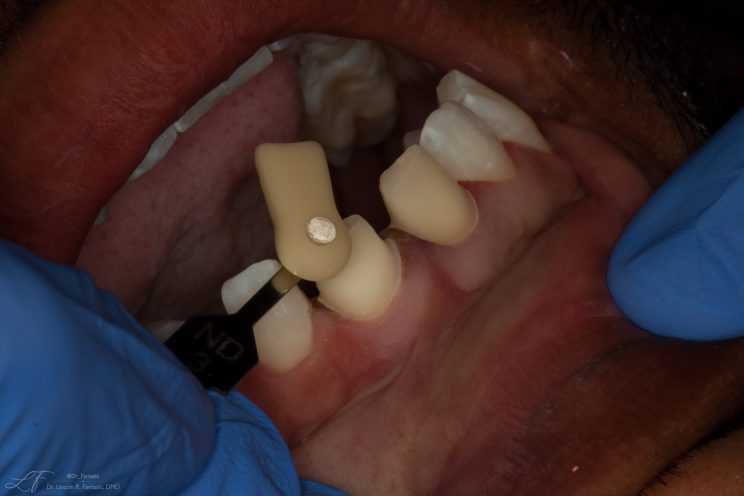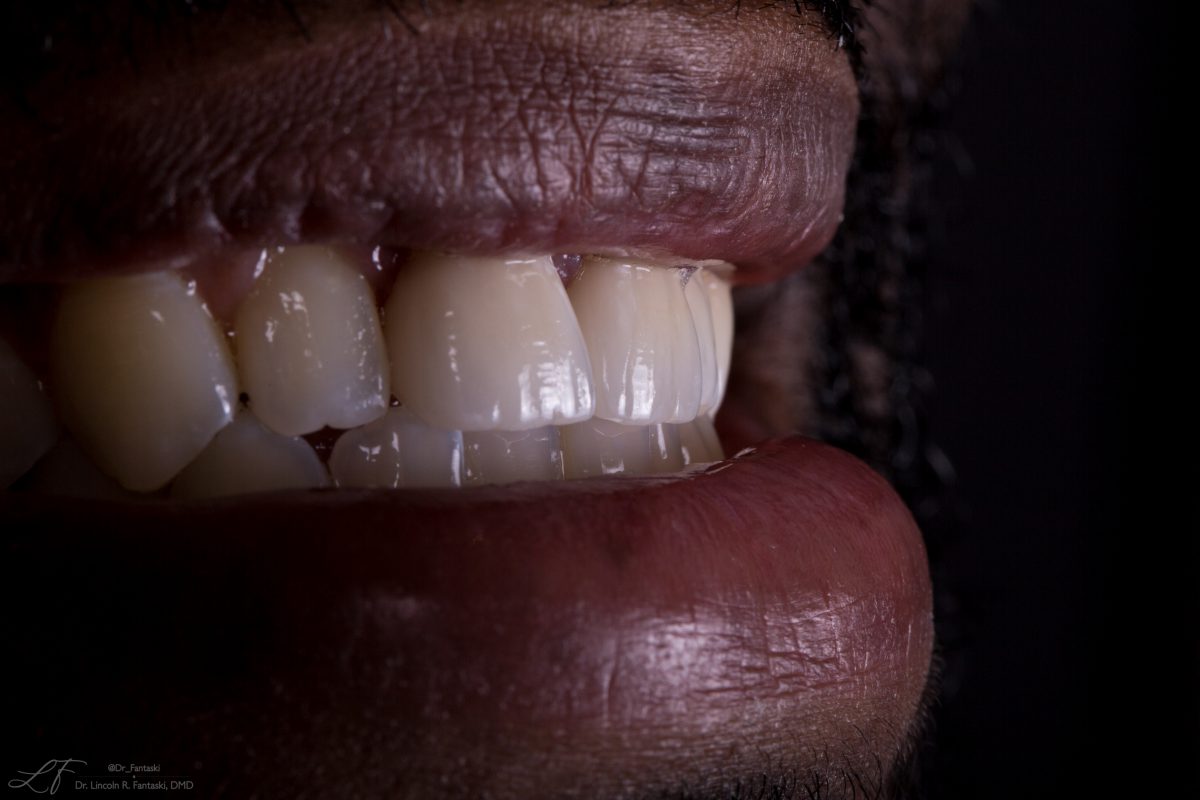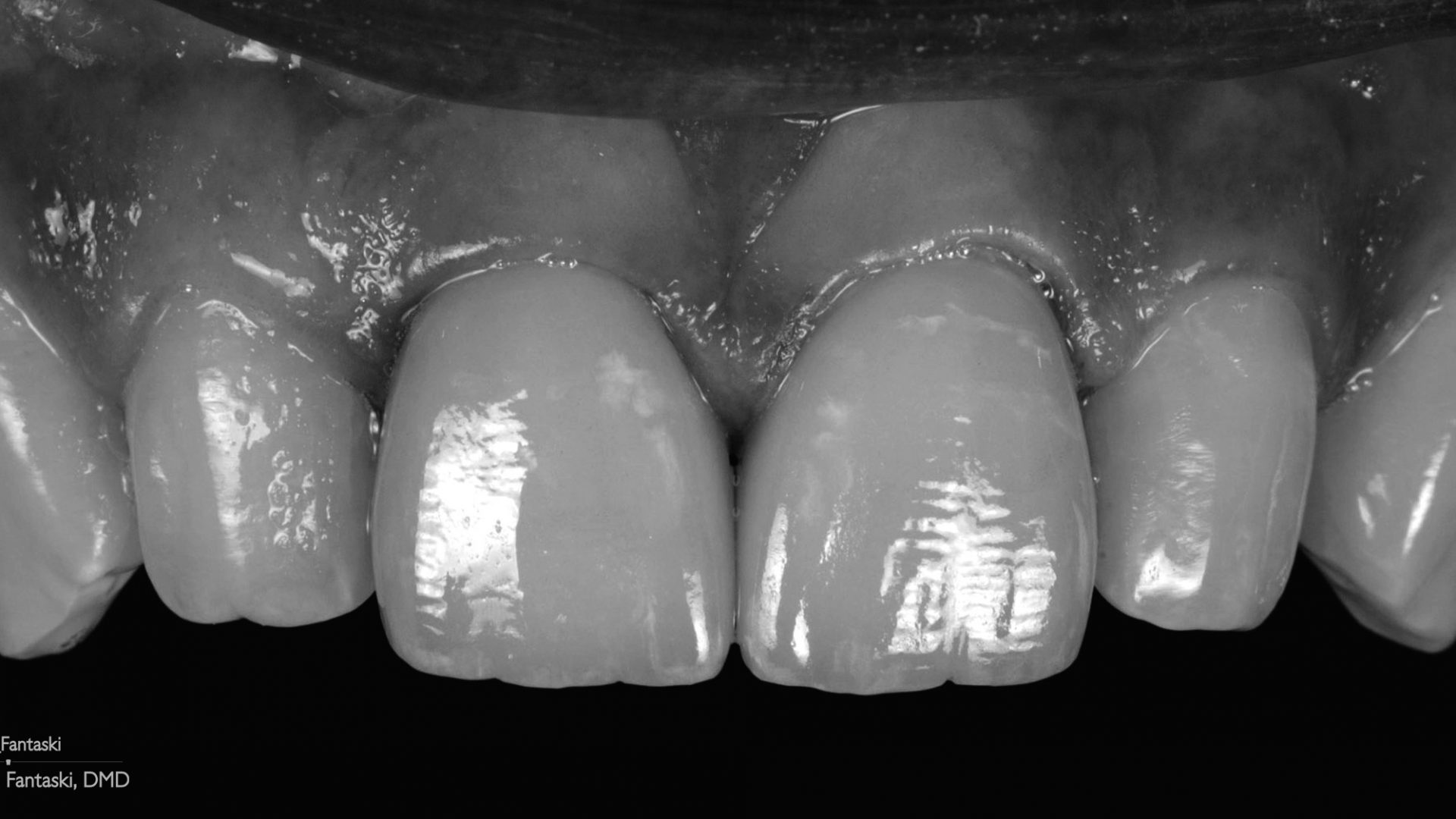Crown and Bridge – Indirect Restorations
Missing teeth can damper your self-confidence and jeopardize your oral health. Damaged teeth can do the same, or worse! Crowns and bridges, also called fixed prosthodontics, have been used in the dental field for years to complete smiles and re-establish optimal oral health.
What is a Crown? Why may I need a crown?
A crown, or full coverage restoration, is used when a significant amount of tooth structure has to be removed, or has to be replaced. Crowns are used to replace large fillings that have compromised the structural integrity of a tooth, or to fix color, shape, or alignment of teeth. Since the crown covers all or most of the tooth structure that you can see, its strength is greatly improved over fillings. Additionally, the material we make crowns from is significantly harder and stronger than filling material. Dr. Fantaski may recommend a crown if a filling gets large, after a root canal on a tooth, if your tooth has a crack, to restore an implant, or as a part of a smile makeover or reconstruction. Front teeth crowns can be more challenging, and getting the shade right is an art and science… for more information about front crowns – check out this page.
What is a Bridge?
A bridge, or fixed partial denture, consists of three or more crowns fused together. Dr. Fantaski prepares the teeth on either side of the gap left by a missing tooth and fits them with the crowns. The prosthetic tooth will literally bridge the gap in your smile. A bridge will prevent your teeth from shifting out of place and restore a properly aligned “bite.” Non-removable, fixed bridges are cemented in place and cannot be taken out by the patient. Bridges have come a long way, with the advent of new materials such as Zirconia, which is both strong and tooth colored. That being said, often times Dr. Fantaski will recommend a single implant rather than a bridge to restore a missing tooth.
Preparation
The first step for a crown and bridge appointment will begin with an X-ray and thorough diagnosis. A preliminary impression will be taken to record the current condition and shape of your teeth, usually with one of our digital inter-oral scanners (none of that goopy impression material!) and a shade is selected. Next, Dr. Fantaski will numb that area your mouth and conservatively reshape the tooth (or teeth) indicated to make room for the crown material. That usually involves removing all of the old filling material, if the tooth has had a filling before, or removing the old crown if the tooth was crowed before. After the tooth is prepared, an additional impression is taken (again, digitally) so that your restoration can be designed.

For most cases, the design and fabrication can be completed in our on-site lab and your crown or bridge is milled, polished, and sintered while you wait. Most of our crowns are made of ‘super translucent multi-layer zirconia’ which looks remarkably like your natural teeth! That is milled out of a block of what looks like white powder, then polished, and sintered in an oven to become the final color and shape of your crown. Finally, a post-sinter polish is completed to make the restoration shiny.
Fitting the Crown or Bridge
Next, Dr. Fantaski or one of our highly trained staff will try in the crown, and evaluate the esthetics of the final restoration. He will discuss the color, shape, and overall appearance of the restoration with you to ensure you’re happy as happy with the result as he is. If everything looks good to both of you, and the restoration fits precisely, then he will cement the restoration and make any necessary adjustments. With careful maintenance, crown and bridge restorations can last for a decade or longer!
FAQ and Post-Op Instructions…
Crown and bride work does require cutting down the tooth to make room for the crown materials. It is possible for you to have some sensitivity on the teeth being treated after the appointment, and we recommend sensitivity or prescription strength fluoride toothpaste to help counteract this. Additionally, if your bite was not 100% perfect (which can happen, since the crown is delivered when you are still numb) your bite may need a minor adjustment. This is critical to the long term success of your crown, and the tooth under it. If your sensitivity is more severe, or lasts more than a week, please contact your dentist ASAP. Dr. Fantaski does want you to floss around a temporary, if one was fit, but pull the floss THROUGH the contact, don’t pull back up or you risk removing the temporary. For similar reasons, avoid sticky candy and foods that may pull the temporary off. The temporary is also not as strong as your final restoration will be, so please don’t try to use your temporary to bite on anything too hard!
Just like for a temporary, the final crown should have floss pulled THROUGH the contacts rather than UP them for the first 72 hours, as the cement finishes curing. Since we have to clean the cement out of your gums after fitting the crown, your gums may be sore. This is normal, please keep the area clean with floss and utilize warm salt water (1 tbs of salt in 8 oz of water, gently swish around in your mouth for 30 seconds, and gently spit out after) for the first few days to get the gums feeling and looking back to normal!
What types of materials are crowns made out of?
Crowns can be made out of a variety of materials. To list a few: gold, PFM (or porcelain fused to metal), lithium disilicate (often referred to by the major brand name, eMax), zirconia, or porcelain.
Choosing the right material for your crown is a difficult balance that your dentist has to consider. The more esthetic a material is, the less strong it is (generally speaking). Often we use different materials for back teeth than front teeth, or if you grind your teeth or are getting bridges we may use a different material.
Generally speaking, Dr. Fantaski will recommend a SMTL zirconia restoration for posterior teeth and premolars, which is a layered restoration but is still monolithic (or entirely made of) zirconia. These crowns are incredibly strong and have very life-like esthetics – making them an excellent option for most teeth. Sometimes for grinding or bridges, a non-layered or less translucent zirconia is used.
For front teeth, Dr. Fantaski usually recommends eMax, or lithium disilicate, which can have porcelain hand stacked on the lip facing surface by expert ceramists for absolutely stunning esthetics, and can sometimes look better than natural teeth! These restorations are a bit more fragile than zirconia crowns though, so habits such as opening packaging with your front teeth (something we already do not recommend) should be avoided.

Top Featured Image: Two crowns on the two front teeth, numbers 8 and 9.


